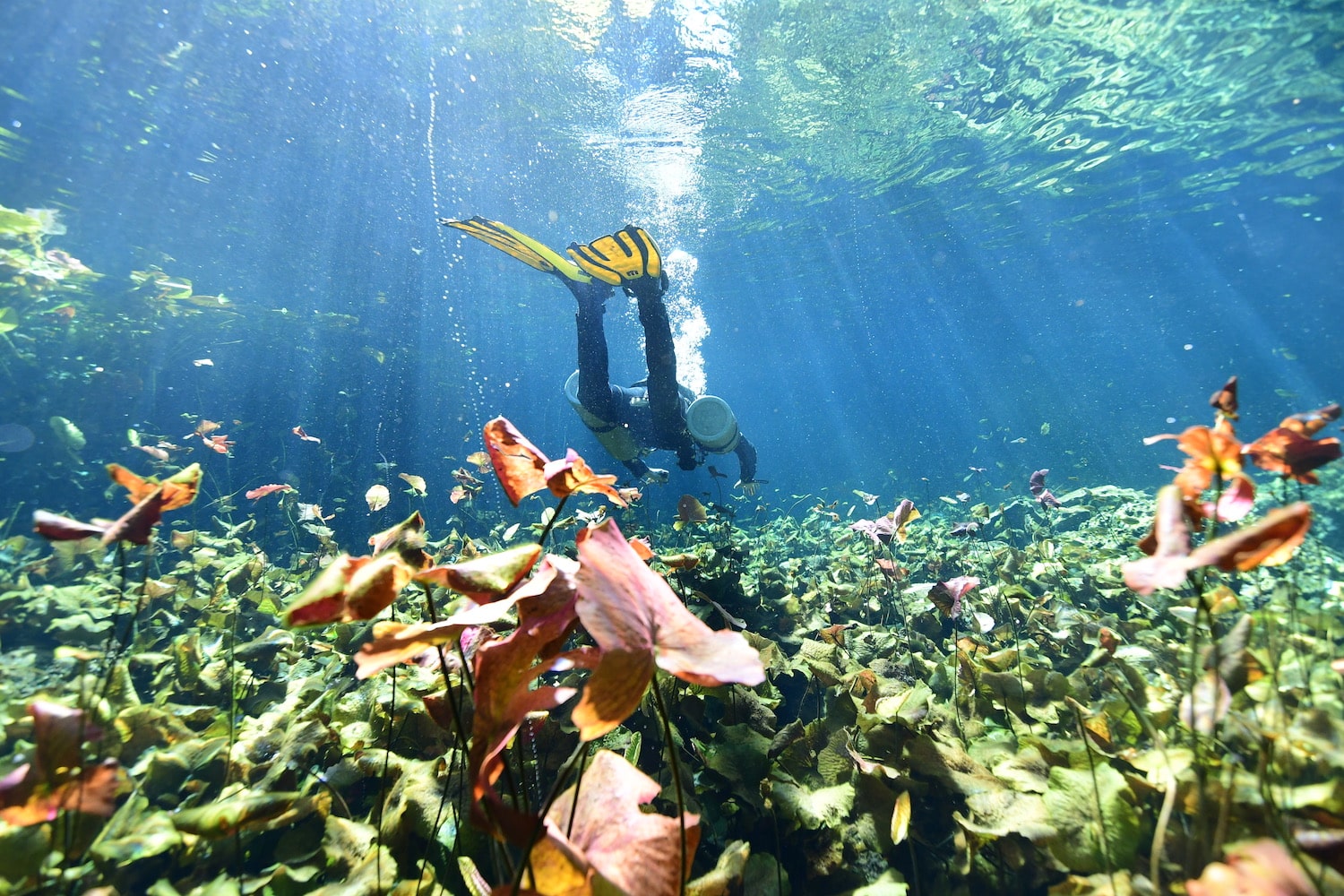
Cenote Nicte Ha, a verdant underwater garden

1 dive site
Difficulty: Easy
Dive or snorkel
Maximum depth: 8 meters
Features: cave formations, lily pads
Nicte Ha is a smaller cenote with an ample lily pad garden and plenty of sunlight at its entrance. The cavern features interesting formations, and the entrance to the cenote is ringed with beautiful vegetation. It has the feel of a relaxing playground and is appropriate for both divers and snorkelers. A snorkeling tour has very nice views of the lily garden. The tour can proceed into a small cavern with views of formations and a picaresque view of the garden from the dark.
List of the Cenotes near Tulum
We give guided eco tours of both snorkeling and scuba diving for all of the cenotes below. Please feel free to contact us to discuss our personalized scuba diving eco tours into the cenotes of the Mayan Riviera.
Click on the cenotes for details about each:
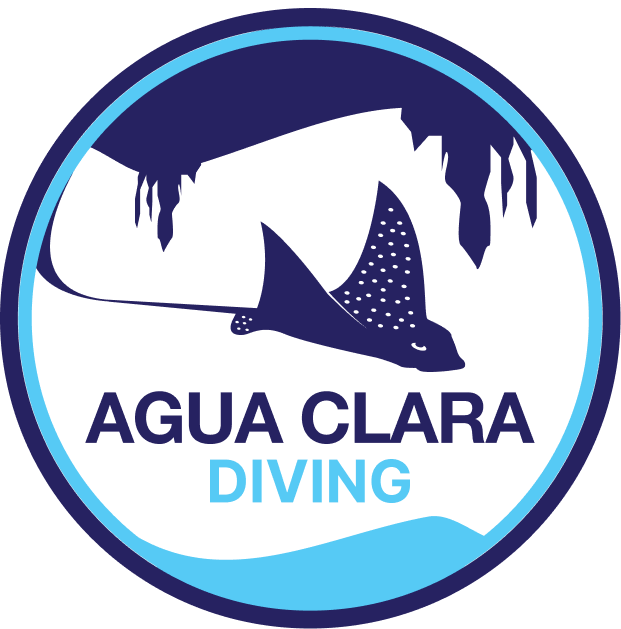


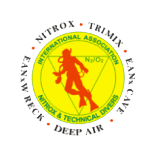

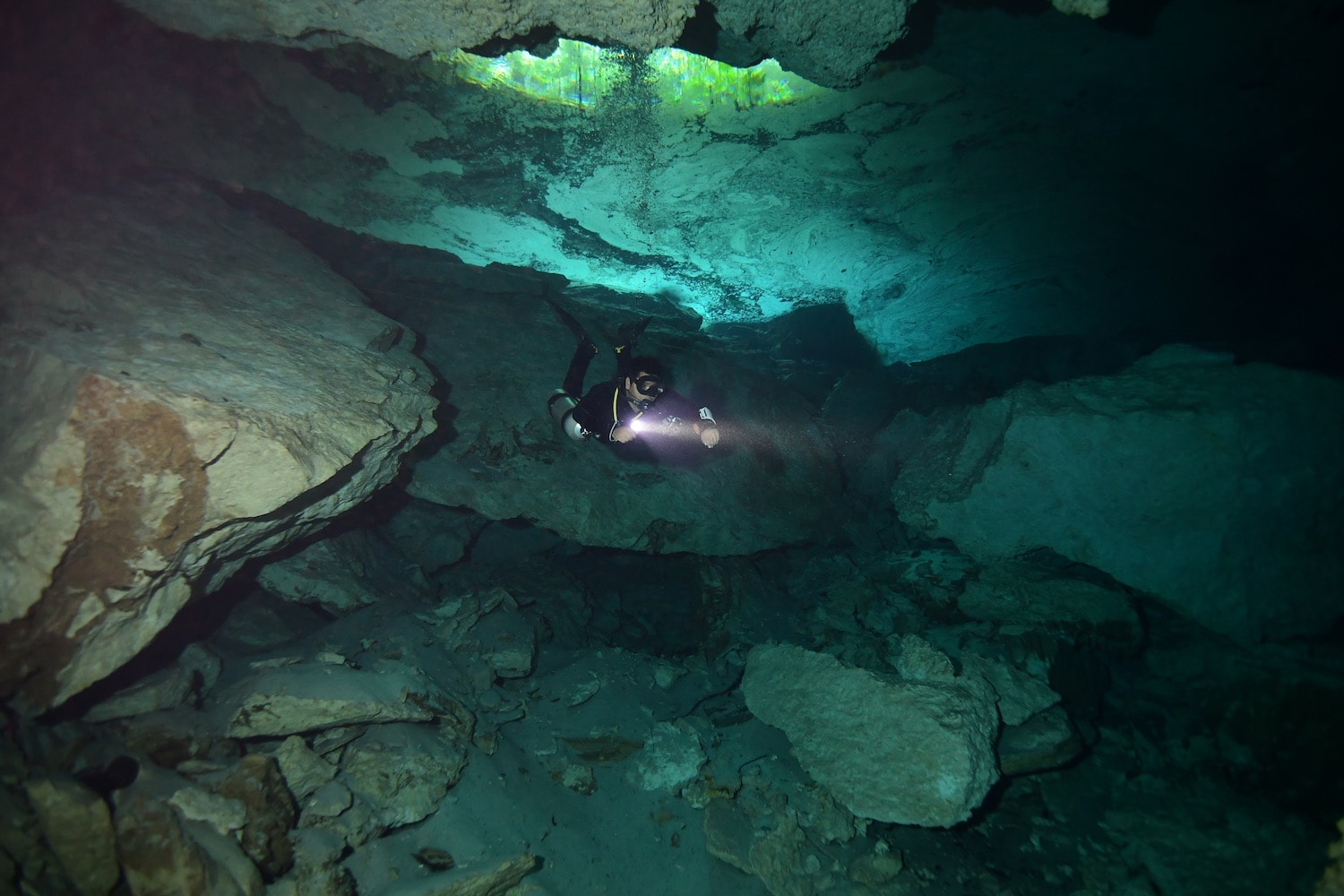
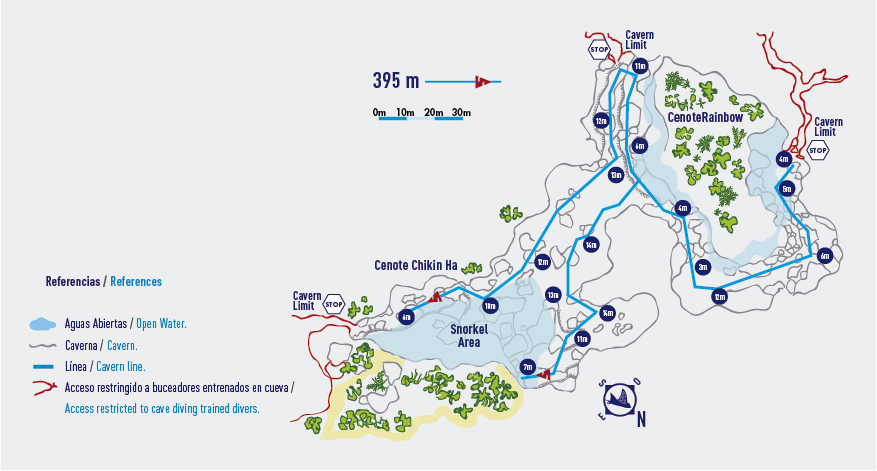
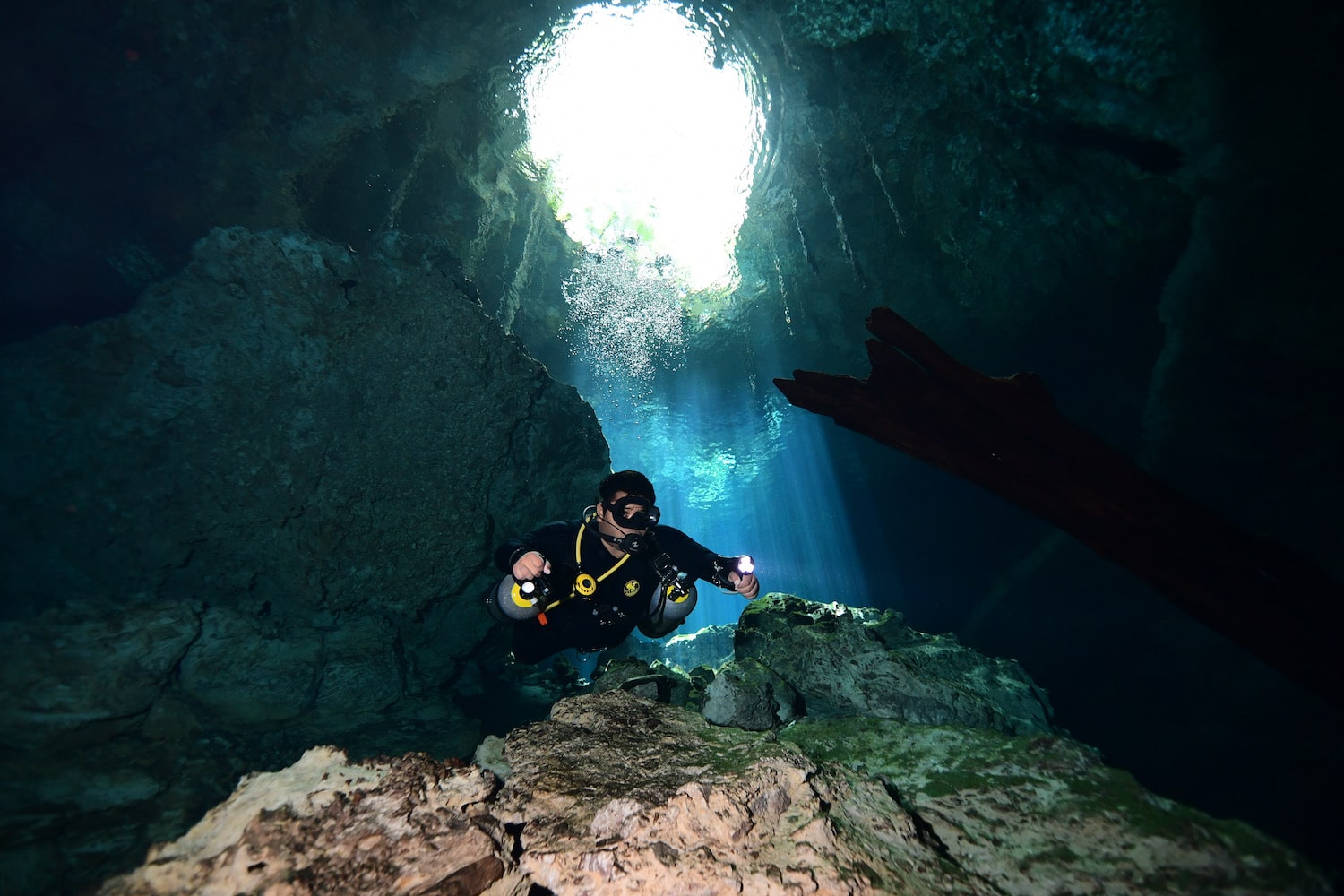
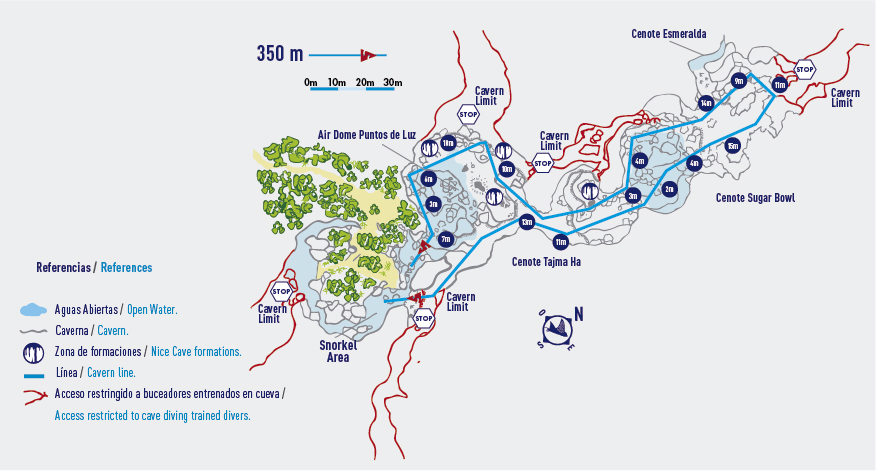
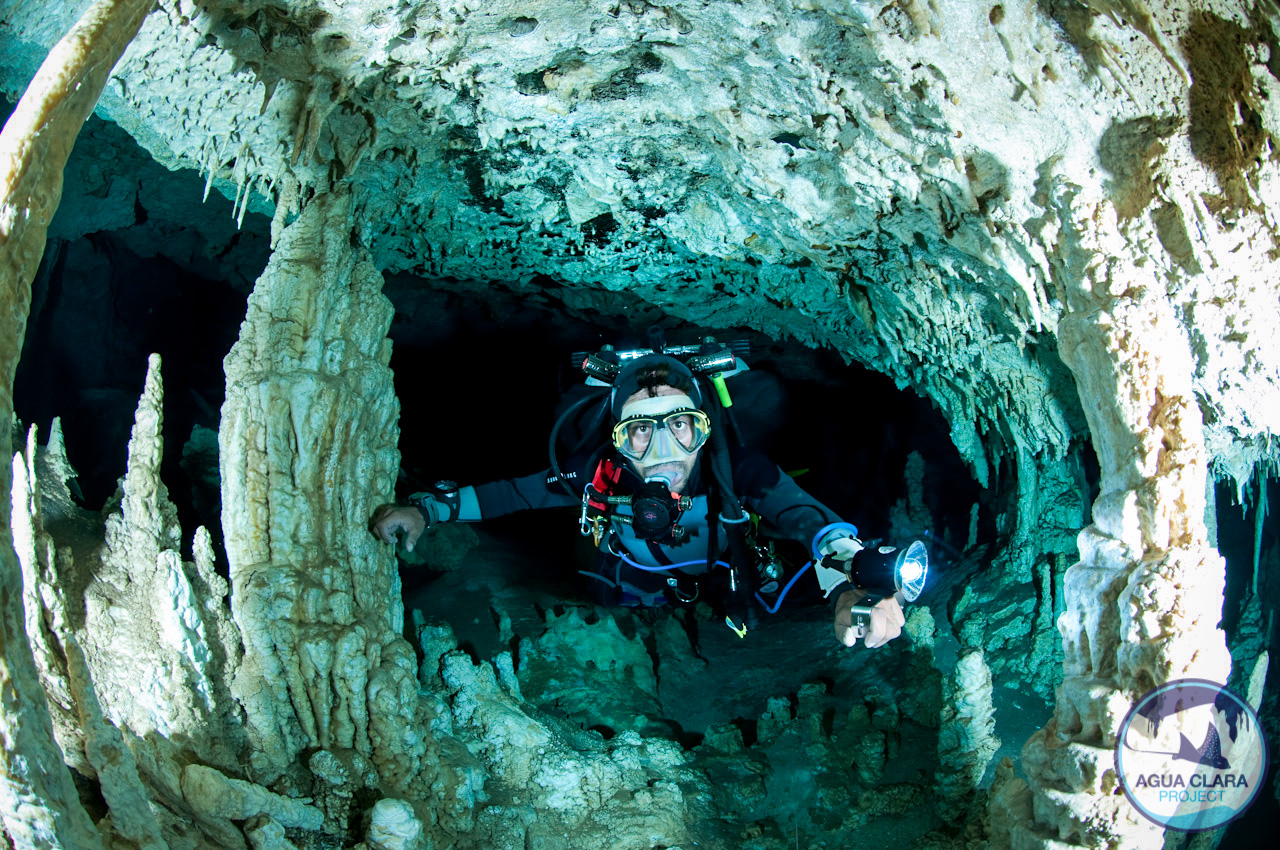
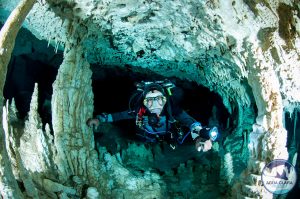
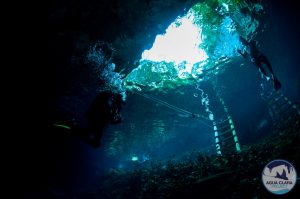

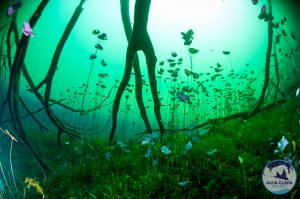
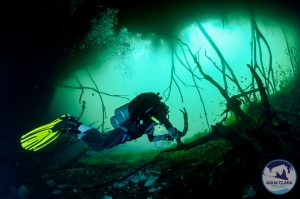
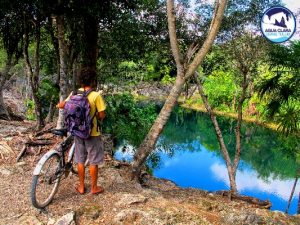
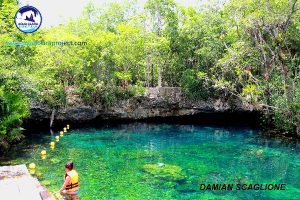
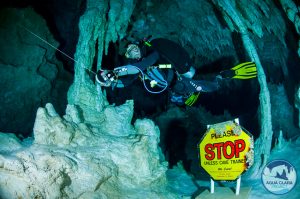
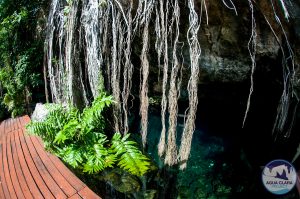
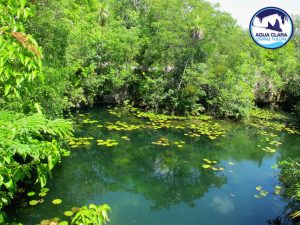
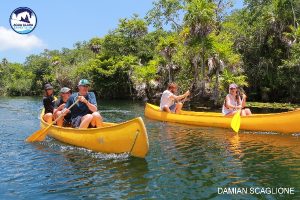
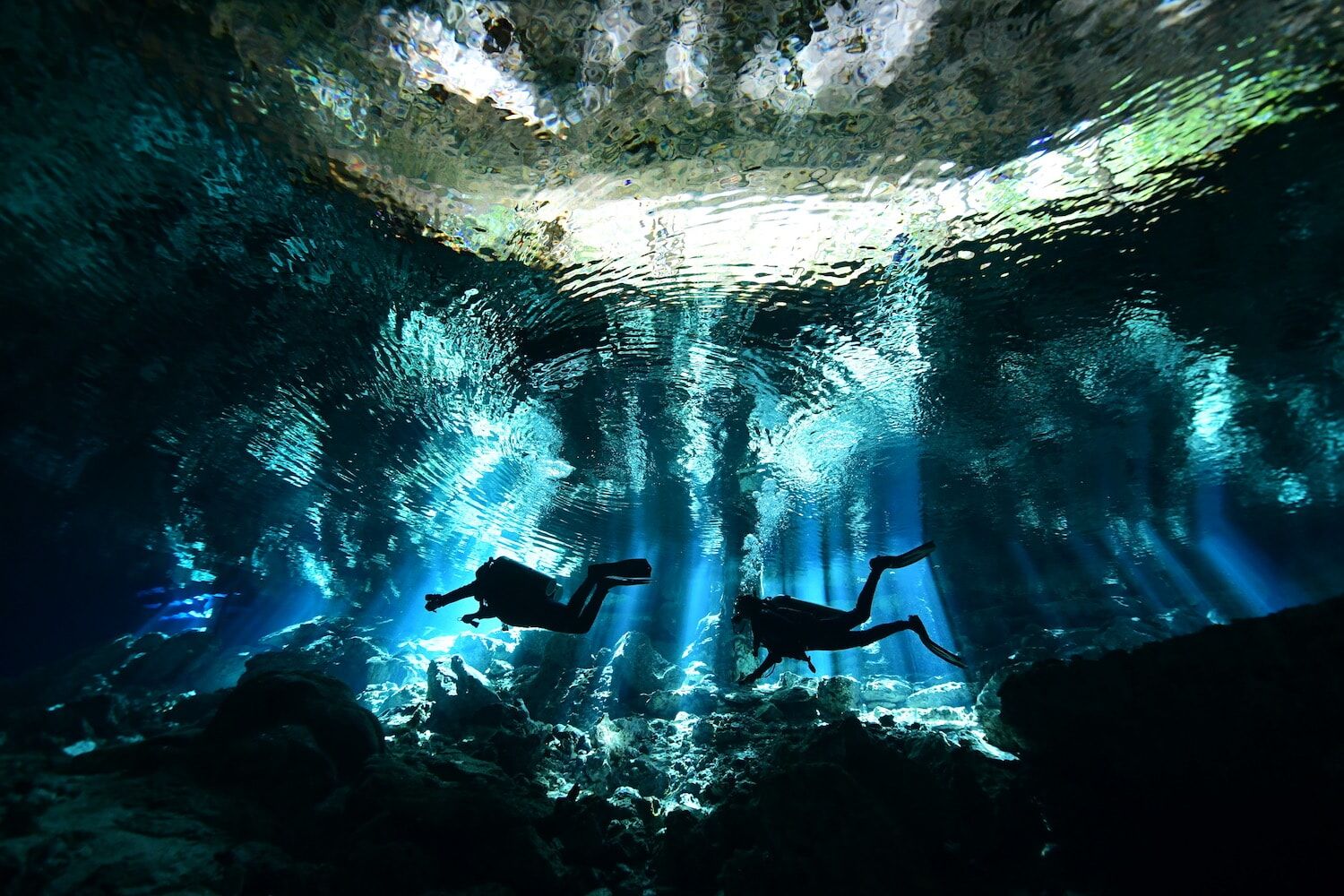

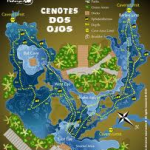

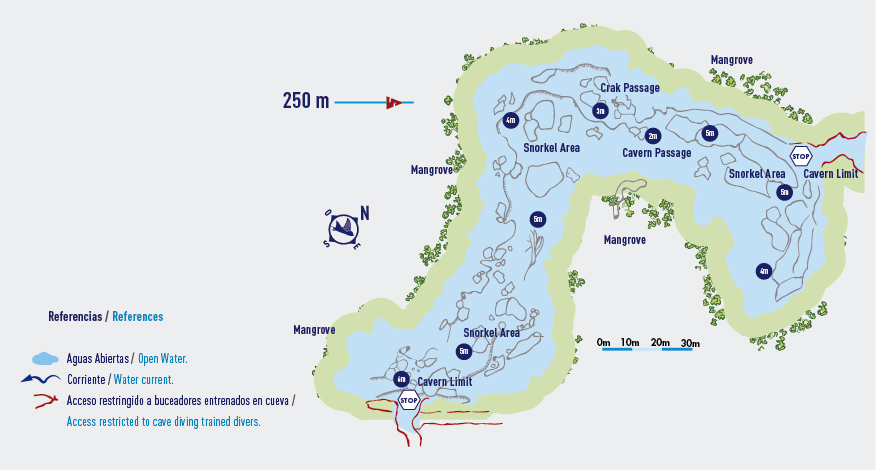


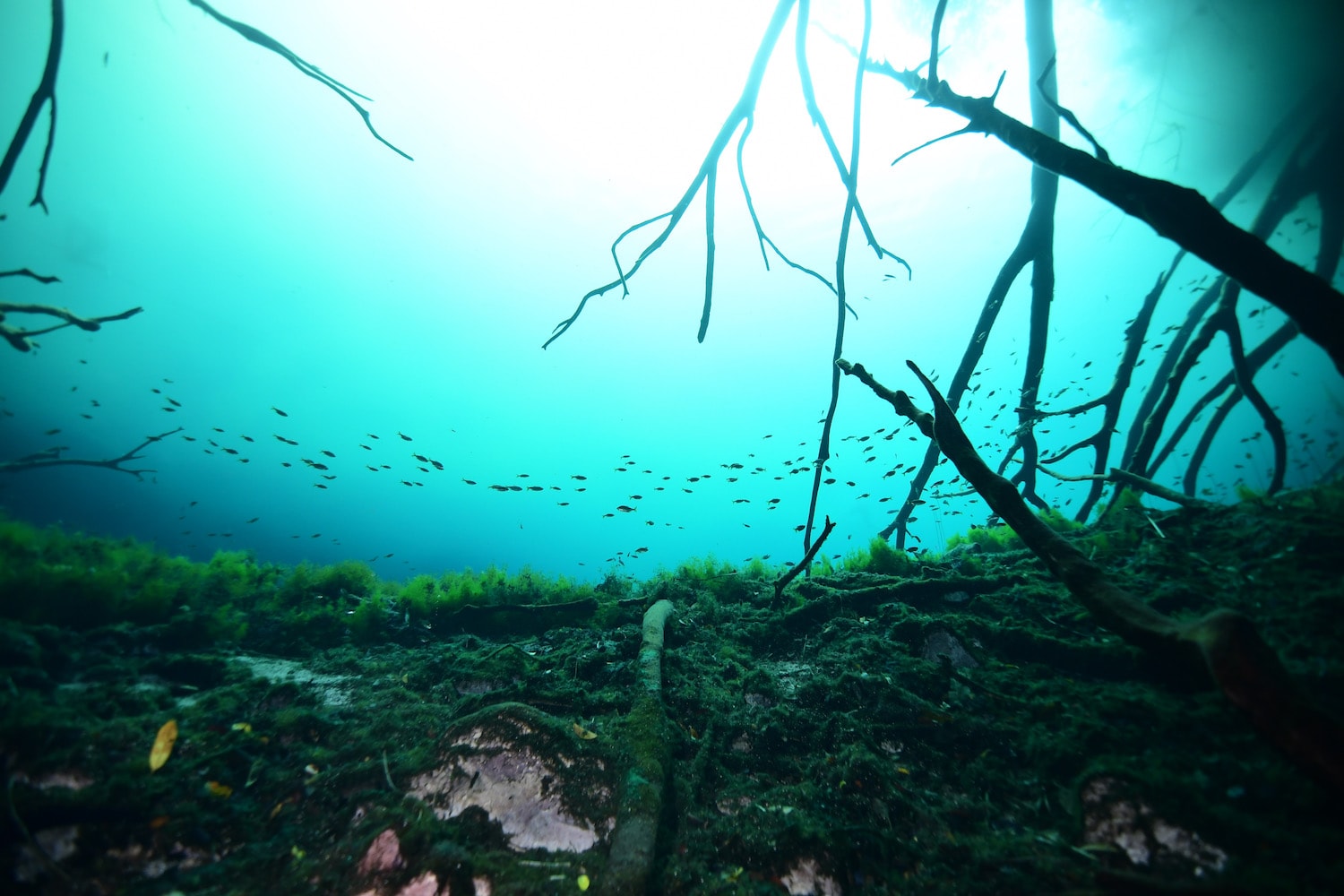
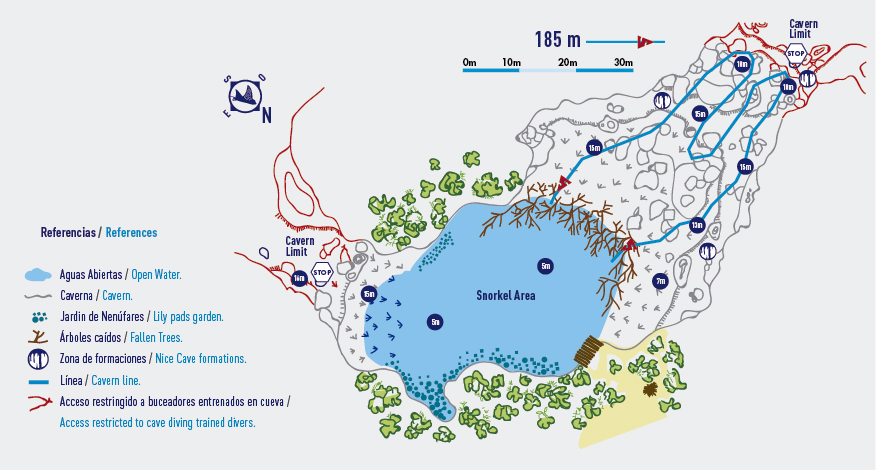
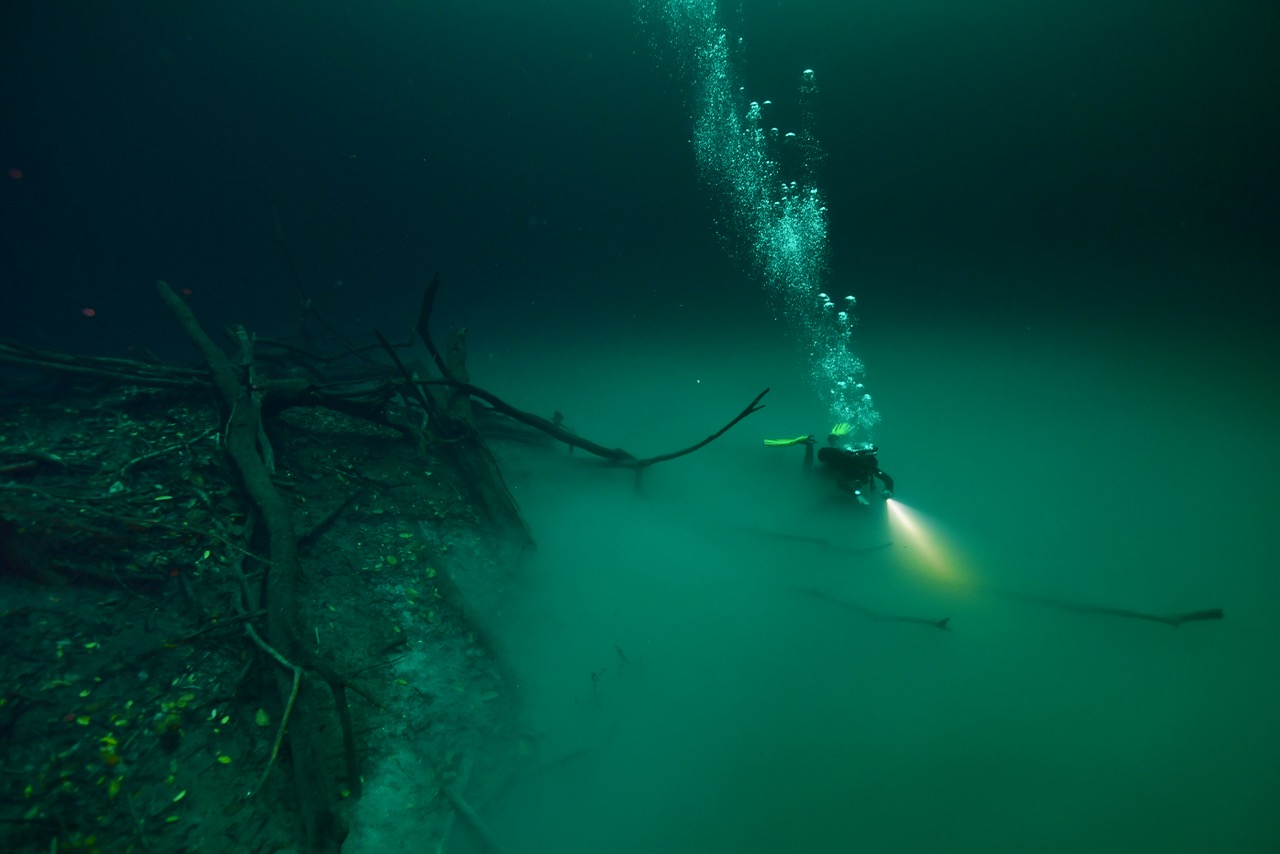

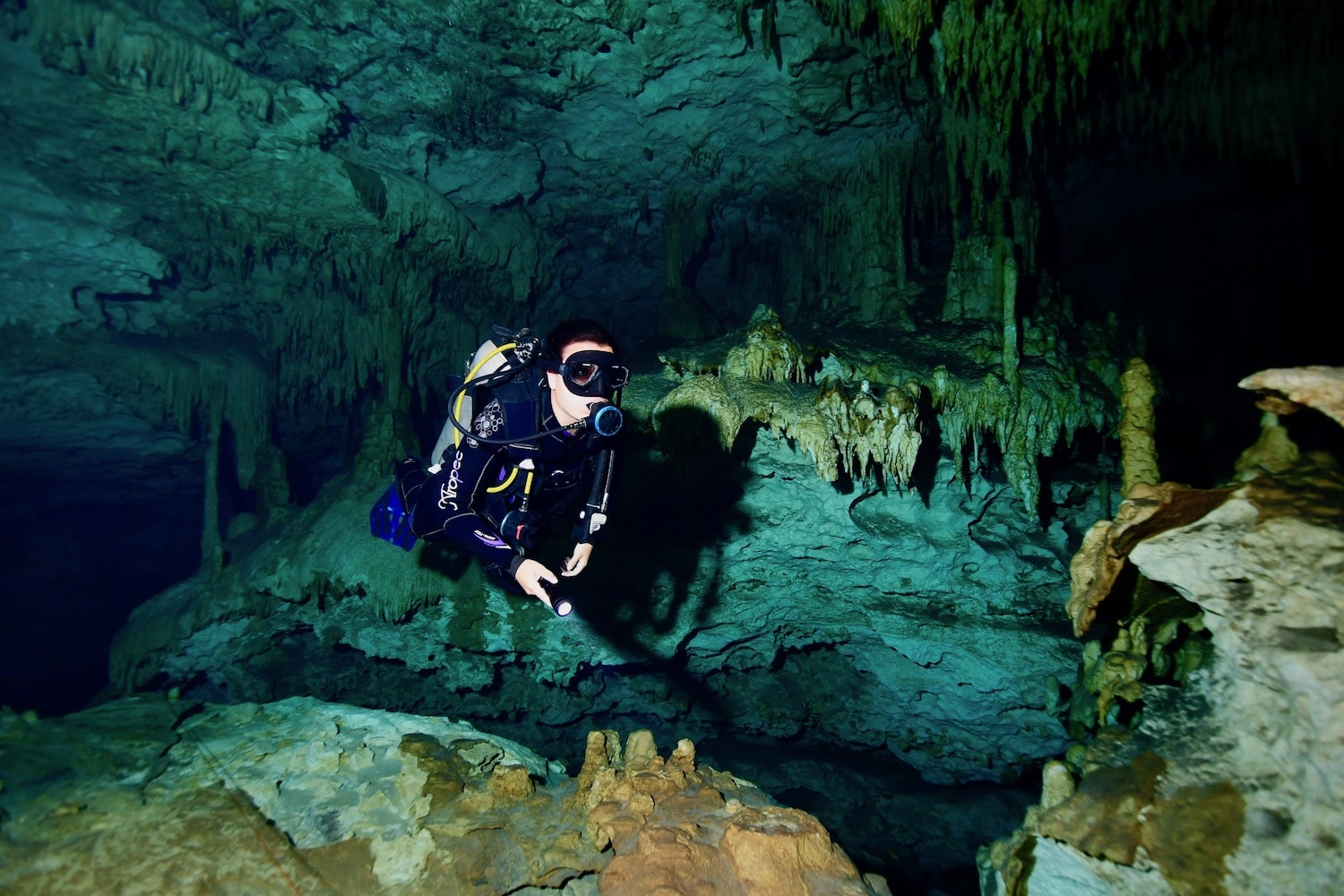

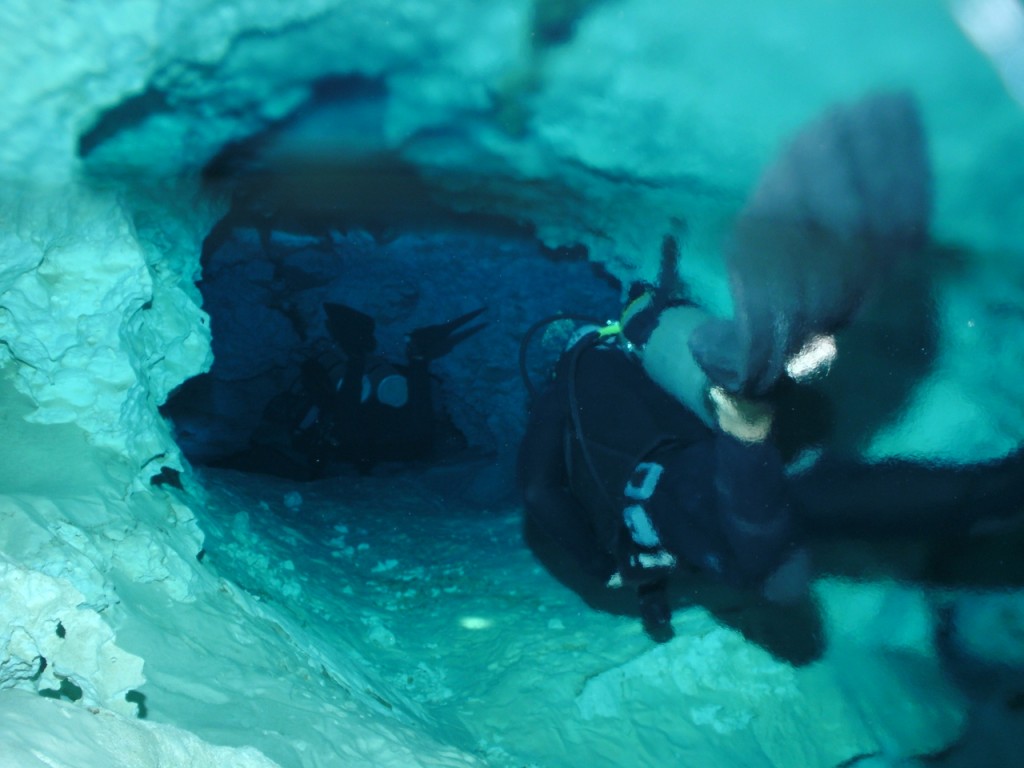


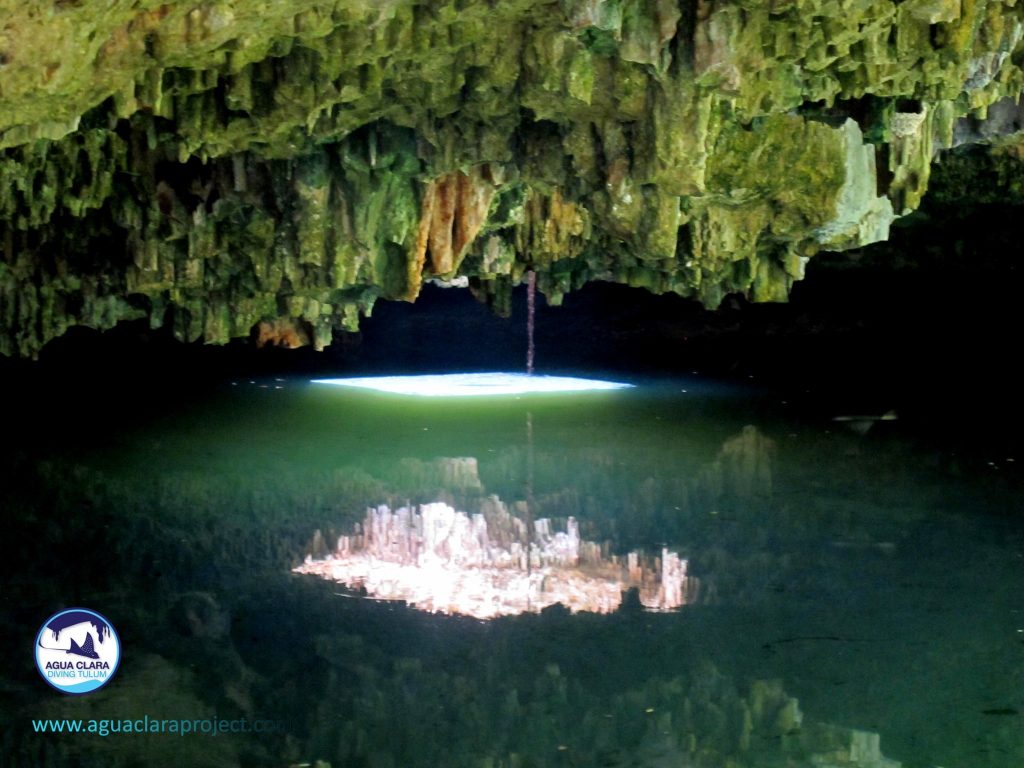
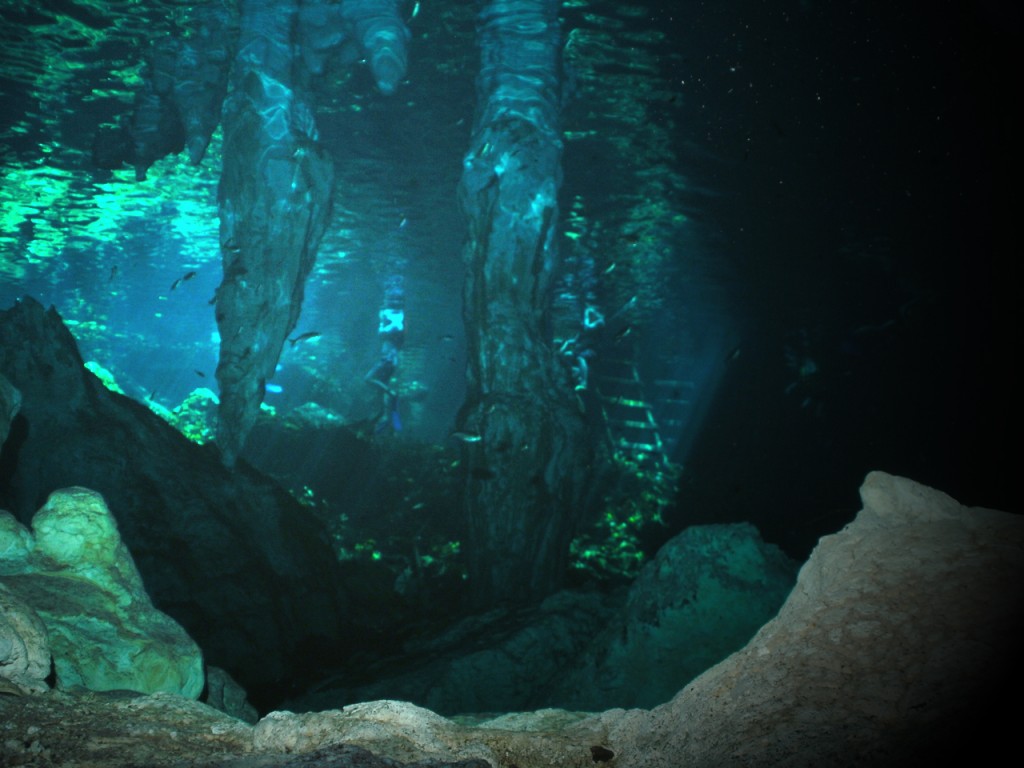







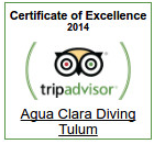
 Follow us on Facebook
Follow us on Facebook Check Tulum store on Trip Advisor
Check Tulum store on Trip Advisor